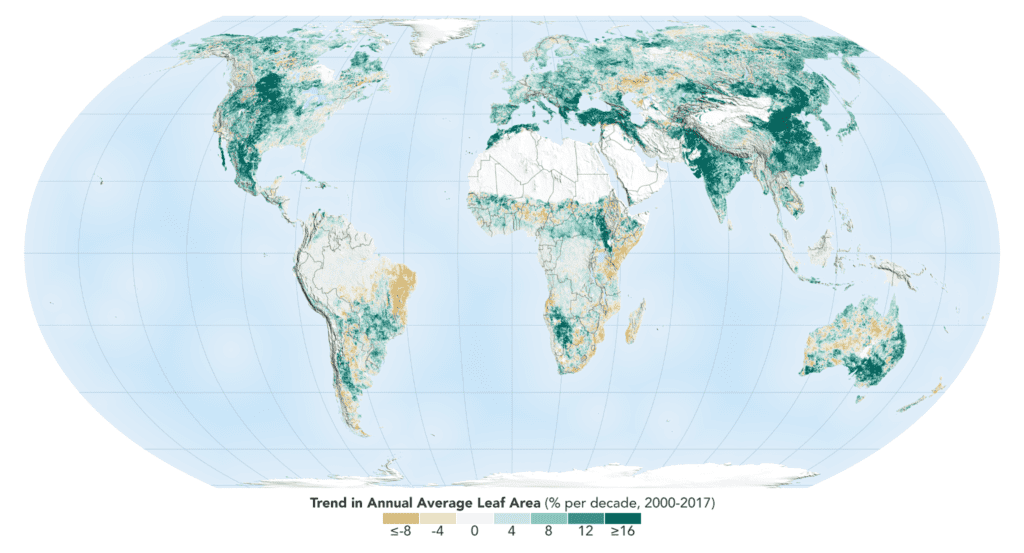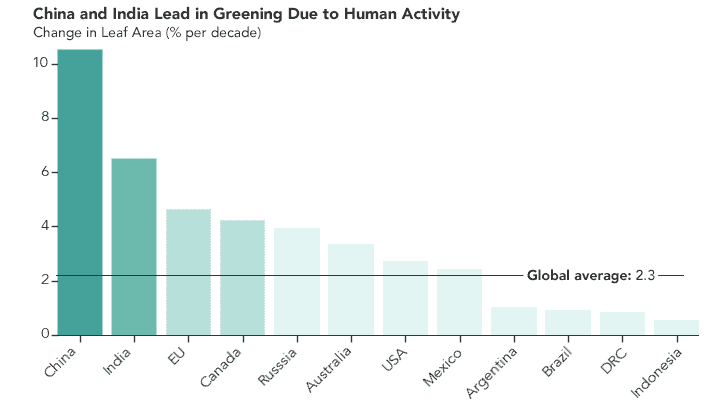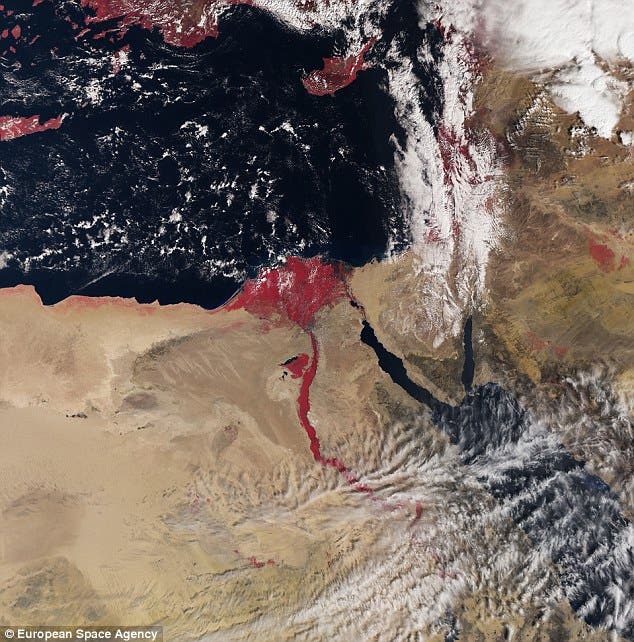
With so much news of deforestation in the Amazon rainforest and other tropical areas, it’s easy to think that our planet is in the process of turning into a wasteland. However, the opposite seems to be true: Earth has been getting greener in the last 20 years. According to data from NASA satellites, the planet’s surface has seen an increase in leaf area of plants and trees equivalent to that covered by all the Amazon rainforests.
While this is encouraging news, and much of this greening comes from reforestation efforts, some of it also comes from increasing agricultural areas.
Greener Earth
Researchers first noticed that Earth was getting greener in the mid-1990s, but at the time everyone thought this was due to the fertilization effect from the added carbon dioxide in the atmosphere. Now, data from the Moderate Resolution Imaging Spectroradiometer, or MODIS, suggests that human activity is also contributing significantly to the increase in vegetation coverage.
The MODIS sensor is mounted on a NASA satellite that has recorded four snapshots of every area of the Earth, every day for 20 years. This wealth of long-term data enabled scientists at NASA to assess which areas of the globe were gaining or losing foliage. Researchers report that 2 million square miles of extra green leaf area are being added every year, marking a 5% increase from the early 2000s.
Much of this increase is due to two countries with the world’s biggest populations. Both India and China have significantly increased their food production to sustain their growing populations, leading to a massive increase in total green leaf area — even though the cultivated area hasn’t really improved all that much. Genetically modified crops coupled with modern farming practices (where a field is replanted to produced another harvest several times a year) has allowed both China and India to increase their grain, vegetable, and fruit yields by 35-40% since the year 2000, while at the same time increasing the agricultural foliage.
“China and India account for one-third of the greening, but contain only 9% of the planet’s land area covered in vegetation – a surprising finding, considering the general notion of land degradation in populous countries from overexploitation,” said Chi Chen of the Department of Earth and Environment at Boston University, in Massachusetts, and lead author of the study.
China and India have also embarked on strong reforestation programs. China has spent more than $100 billion on trees in the last decade alone. Nearly 22 percent of the country is now covered in forest, compared to 19 percent in 2000, according to the Ministry of Environmental Protection.
In 2017 alone, 66 million saplings were planted in just 12 hours by Indian volunteers. However, most of the greening in India comes from croplands (82%) while new forests make only minor contributions (4.4%). This is in contrast to China where forests represent 42% of the extra vegetation while croplands contributes with 32%.
Elsewhere, such as in former USSR countries, forests have spontaneously regrown on abandoned farmland after the fall of communism.
The analysis also uncovered massive losses of vegetations in many other regions around the globe, particularly in South America and Southeast Asia. This is worst felt in the so-called “Arc of Deforestation”, which stretches across southeastern edge of the vast Amazon forest. The Indonesian provinces of Sumatra and Kalimantan are also seeing steep declines in vegetation.

This extra vegetation that wasn’t accounted for before will now have to be accounted by climate models. About a quarter of all carbon emissions from human activities are offset by terrestrial vegetation, with the size of the carbon land sink increasing over time. Another quarter is absorbed by the oceans, meaning that half of the emissions due to human activities remain in the atmosphere.
“But, now that we know direct human influence is a key driver of the greening Earth, we need to factor this into our climate models,” Rama Nemani, a research scientist at NASA’s Ames Research Center, said in a statement. “This will help scientists make better predictions about the behavior of different Earth systems, which will help countries make better decisions about how and when to take action.”
The authors of the new study published in Nature Sustainability caution that local greening in places such as India and China does not offset the environmental damage due to vegetation loss in tropical regions, such as Brazil and Indonesia. Nevertheless, the findings are generally positive — and refreshingly so.
“Once people realize there’s a problem, they tend to fix it,” Nemani said. “In the 70s and 80s in India and China, the situation around vegetation loss wasn’t good; in the 90s, people realized it; and today things have improved. Humans are incredibly resilient. That’s what we see in the satellite data.”



